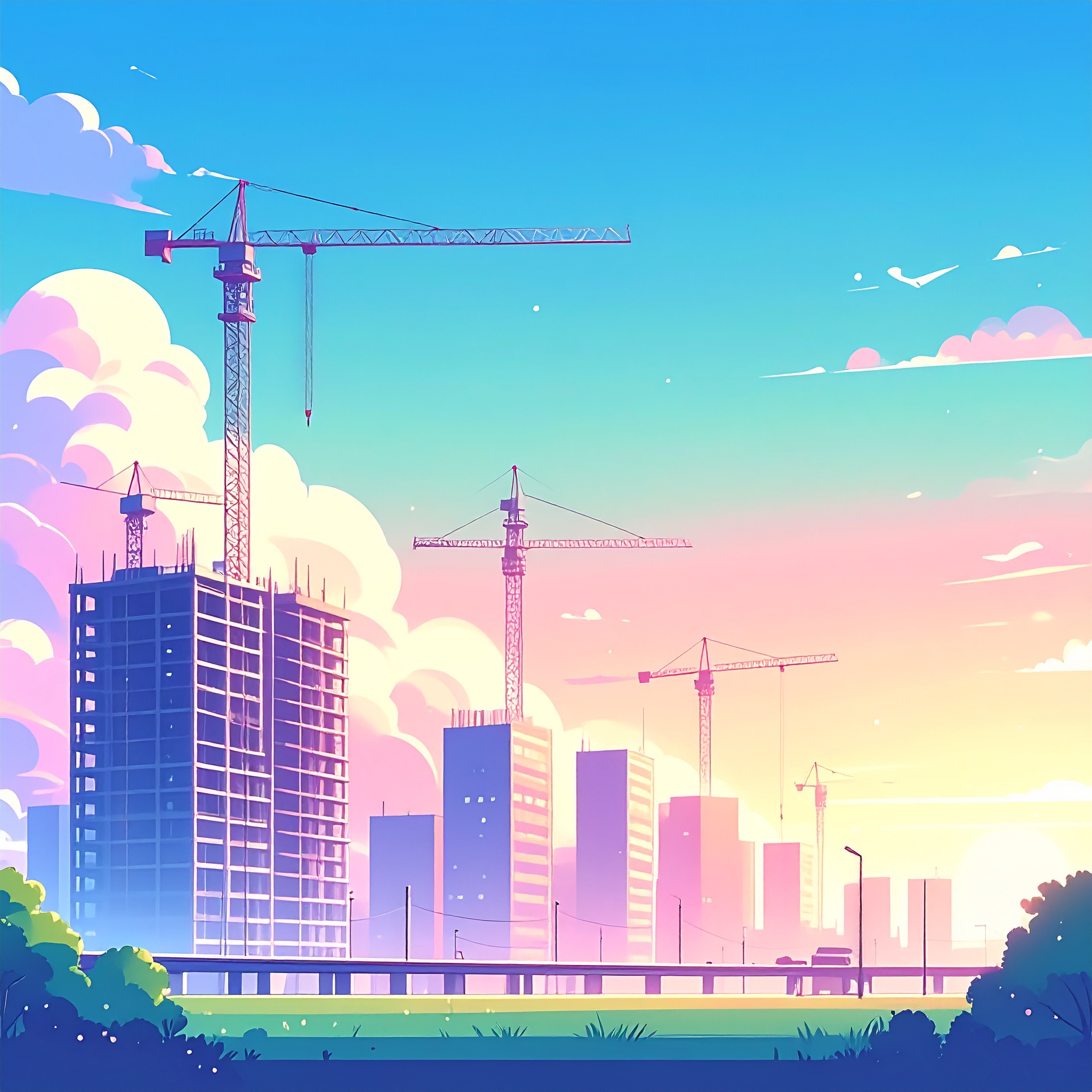“If I’m going to live somewhere, it might as well be a pristine, brand-new home.”
This is a common sentiment shared by many prospective tenants. In Japan’s rental market, newly built and recently constructed properties consistently attract strong demand—so much so that units often reach full occupancy even before completion.
However, brand-new doesn’t always mean flawless. In reality, many residents come to discover unforeseen issues and inconveniences that arise precisely because a property is new. These surprises can be unsettling, especially when expectations were set high.
This article sheds light on the often-overlooked drawbacks of new properties, drawing from actual tenant experiences and case studies. We’ll also highlight the key aspects to verify before signing a lease, ensuring your investment is both informed and rewarding.
Drawback ①: Contract Before Completion, Without a Physical Viewing
In new-build market, properties are often listed while still under construction. High-demand units may be reserved or sold out before any opportunity arises for a physical inspection. As a result, prospective buyers must rely solely on architectural plans and digital renderings when making decisions.
Common Risks Include:
-
Natural lighting may be less favorable than anticipated
-
Surrounding noise levels or environment may not align with expectations
-
Odors from building materials or indoor air quality may be undesirable
Suggested Measures: inquire whether a model unit or a past development by the same builder can be toured. Visit the actual site to assess the neighborhood and confirm natural light conditions firsthand.
Drawback ②: Construction Delays May Postpone Move-in Dates
Even when a property is advertised with a specific “expected completion date,” unforeseen circumstances such as inclement weather, material shortages, or labor delays can cause significant setbacks. This may lead to complications with relocation plans, forcing buyers to seek temporary housing solutions.
Potential Impacts:
-
Previously rented or sold properties must be vacated before the new residence is ready
-
Key life events—such as job transfers or school enrollment—may not align with the delayed timeline
-
Unexpected costs for storage, interim accommodation, or extended hotel stays
Suggested Measures: carefully review the sales contract to ensure it includes clauses addressing handover delays. Proactively discuss flexible move-in options and contingency plans with the developer or agent.

Drawback ③: Underdeveloped Surroundings
Luxury new-build properties are often situated in emerging residential areas or developing districts. While these locations may offer long-term potential, they frequently lack fully established infrastructure, which can pose lifestyle inconveniences—particularly in the early stages of occupancy.
Common Issues Include:
-
Unclear waste disposal guidelines and communal area management
-
Ongoing construction noise from adjacent developments or infrastructure projects
-
Absence of paved roads or functional street lighting
Suggested Measures: use tools like Google Street View or conduct an in-person visit to assess the area’s current livability and infrastructure status.
Drawback ④: Initial Defects in Building or Fixtures
While new-build residences offer the appeal of being untouched and brand-new, this also means that many fixtures and systems have never been tested under real living conditions. As a result, certain issues may only surface after occupancy begins.
Typical Issues Reported:
-
Air conditioning units failing to operate
-
Leaks or drainage problems in plumbing
-
Misaligned or poorly functioning doors and windows
-
Internet service not yet activated
Such initial defects are commonly encountered in newly constructed properties.
Suggested Measures: conduct a thorough inspection of all systems and appliances immediately after moving in. Report any malfunctions without delay. Also, confirm the duration and scope of the developer’s or property manager’s initial warranty and service response period.
Drawback ⑤: Premium Rent That May Not Decrease Upon Renewal
Newly constructed luxury properties often command higher rental rates as a “new-build premium,” even when compared to similarly located and equipped older residences. The challenge arises when, even after a year of occupancy, the rent remains unchanged—or in some cases, increases—despite the property no longer being brand new.
This is particularly true while the property still qualifies as “nearly new,” allowing landlords to maintain or elevate pricing at lease renewal.
Suggested Measures: simulate the total cost of staying beyond the initial lease term (typically two years). If you plan to negotiate a rent reduction, initiate discussions with the property manager or landlord at least three months prior to renewal.

Drawback ⑥: Uncertainty About Neighbor Demographics
With pre-owned properties, one can often gain insights into the existing community and its residents. In contrast, new-build developments present a level of uncertainty—it’s impossible to know in advance who your neighbors will be. This raises the potential for noise complaints, disregard for communal rules, or issues with bicycle parking etiquette.
Moreover, since many residents move in around the same time, new buildings often experience a transitional period during which shared norms—such as waste disposal, postal deliveries, and noise etiquette—are not yet fully established, sometimes leading to early-stage confusion.
Pre-Purchase Checklist for New-Build Residences
-
Can you visit the actual site or tour a comparable property of similar quality, rather than relying solely on floor plans and renderings?
-
Is the handover guaranteed by your desired move-in date? What contingencies are in place if delays occur?
-
Are clear guidelines provided for waste disposal and usage manuals for in-unit systems?
-
Is the surrounding infrastructure—such as supermarkets, train stations, and medical facilities—conveniently accessible and well-established?
-
Is there a clearly defined support process and contact information for addressing initial defects or repair needs?
-
Is the rental rate aligned with market standards, and have you considered the conditions at lease renewal?
Look Beyond the Allure of “New” — Understand the Reality
New does not always mean perfect. While new-build residences often showcase pristine finishes and modern amenities, they can also conceal overlooked shortcomings—details that only emerge once daily life begins. Recognizing this distinction is crucial.
What truly matters is not just the visual appeal, but the functionality of the living space, quality of amenities, management standards, and the surrounding environment. Choosing a property with a clear vision of your daily lifestyle needs is key to long-term satisfaction. Thorough due diligence and preparation will lay the foundation for a seamless and enjoyable transition into your new home.




